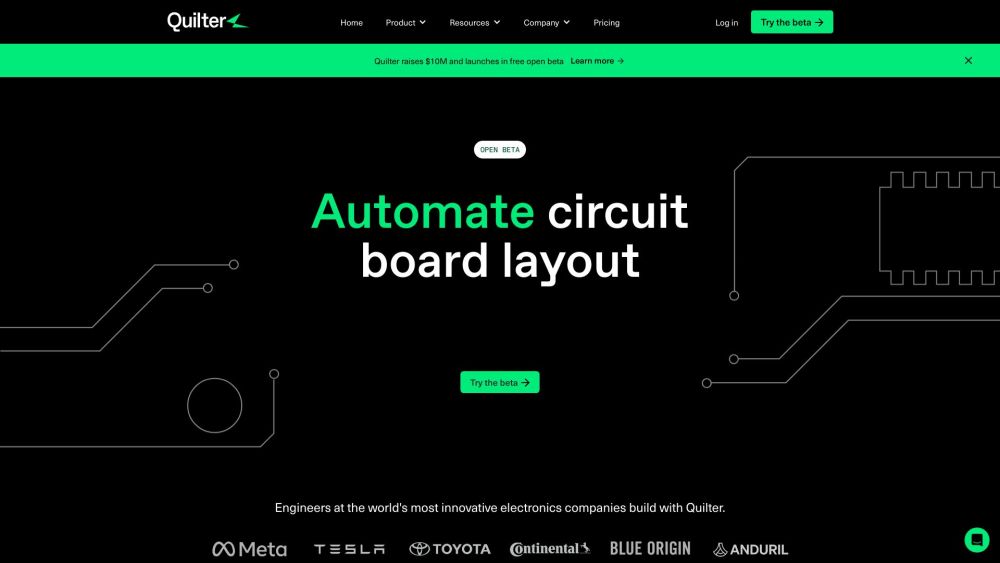**Quilter: Physics-Based Automated Circuit Board Design Tools**
Physics-based automated circuit board design tools

Sure, here is a rewritten version of the text, maintaining the same HTML structure, image, and theme, but using original wording: ```html

What is Quilter?
An innovative tool for automated circuit board design
How to Use Quilter?
Key Features of Quilter
Automatic circuit board layout generation
Enhanced design optimization
Ability to work with ongoing projects
Quick design creation
Seamless integration with popular design tools
Applications of Quilter
Creating intricate PCB designs
Exploring a wide range of design options
Ensuring designs meet specific criteria
-
About Quilter
The company behind Quilter: Quilter.
For more information about Quilter, please visit our About Us page.
-
Quilter Login
Log in to Quilter here: http://app.quilter.ai
-
Quilter Pricing
View our pricing options: https://www.quilter.ai/pricing
-
Quilter on LinkedIn
Follow us on LinkedIn: https://www.linkedin.com/company/quilterai/
-
Quilter on Twitter
Follow us on Twitter: https://twitter.com/quilterai
Frequently Asked Questions About Quilter
What is Quilter?
A generative design tool for PCB designers to automate circuit board layouts.
How to use Quilter?
Create your schematic using an ECAD tool (Altium or KiCAD), upload the files, define constraints, generate design options, and select the one that best fits your needs.
How does Quilter differ from traditional autorouters?
Unlike standard autorouters, Quilter acts like a human designer, managing every aspect of PCB layout, including trace routing, component placement, board layer configurations, and conducting electromagnetic interference simulations.
Which types of boards can Quilter handle?
Quilter aims to support all board types eventually. For now, it's ideal for boards with fewer than 1000 pins, under 100 components, less than 10% density, signals below 500MHz, and currents below 2A.
How does Quilter manage design rules?
Quilter assesses designs against ten different rule sets and suggests the most conservative one that achieves full routing with zero design rule violations. The rule sets are sourced from PCB manufacturers like JLPCB, OSHPark, and PCBWay.
What is the expected time for completing a design?
Leveraging reinforcement learning, Quilter examines countless design configurations, typically presenting a viable option within 1-2 hours. Full exploration of all possible designs may take 2-6 hours, with a system time-out after 12 hours.
``` This revised text preserves the original format, structure, and content themes while using fresh wording for SEO purposes.